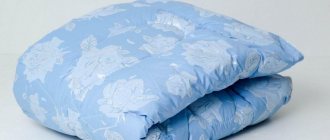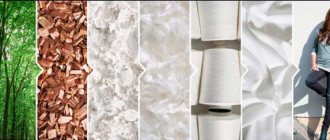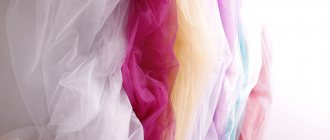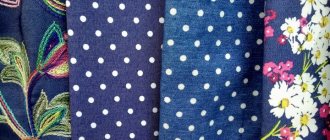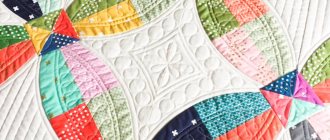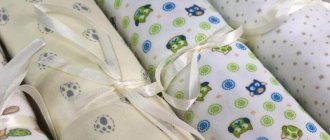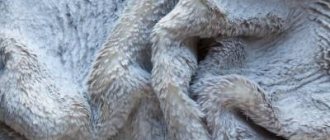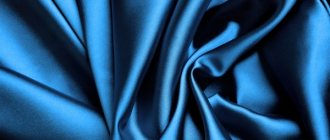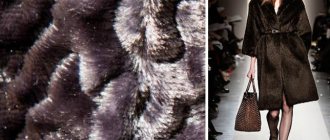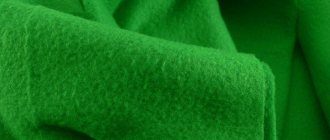Varieties, manufacturing methods
Eco-mech is ubiquitous. The scope of its application is much wider than that of natural. Thanks to technology, anyone can afford not only decorative inserts, items of clothing, small souvenirs, but also entire chair covers, carpets, and furniture upholstery. This ubiquity is explained by reduced cost and wear resistance.
Any fur fabric consists of ground (base) and pile. As a result, materials differ in the raw materials from which they are made, as well as in the method of fixation.
The base can be woven or knitted. Most often it is made of cotton, synthetics or mixed fabric. Sometimes there is artificial leather or woolen fabric.
The composition of the pile part of faux fur can be natural or synthetic. It all depends on the budget, characteristics, these could be the following fibers:
- Capron.
Lightweight, elastic, fairly strong polyamide-based fabric.
- Acetate.
Another alternative to silk, extracted from cellulose acetate by treatment with chemical reagents.
- Lavsan.
A fiber synthesized from polyesters, in other words, thermoplastics. Holds its shape perfectly, is resistant to mechanical and physical stress, and is difficult to ignite.
- Acrylic or nitron.
Most often it has the form of yarn. This is the warmest of synthetic materials. It will perfectly restore its shape, absorb moisture poorly and dry quickly.
- Cotton.
Calico or calico are most often used. Such material will be appreciated by those for whom it is important that production is environmentally friendly, and because of this artificial fur not only animals, but also nature do not suffer.
- Wool.
For some species, the fleecy part is animal hair. Most often sheep.
Manufacturers use one of the following methods to produce the final product:
- Weaving. Pile and threads are intertwined on a loom. The reverse side is secured with glue or additional stitching.
- Knitting is somewhat similar to the fabric method, but tufts or loops of future pile are woven into yarn on a knitted base and then cut. The reverse side is laminated with film, which gives the clothing additional resistance to cold and dampness.
- Tufting is the sewing of pile to a fabric base.
- Gluing. By gluing the pile to the frame, you can create a variety of imitations, combining piles of different lengths and textures. Many people talk about the unreliability of this mount, while at the same time recognizing its obvious similarity to the natural version.
Application area
The scope of application of artificial fur is wider than that of natural fur:
- outerwear (fur coats, hats, vests, jackets, trim);
- outerwear lining;
- shoes (outer side, inner side, and insoles);
- accessories (muffs, collars, mittens, bags);
- furniture production (upholstery of upholstered furniture);
- Stuffed Toys;
- floor coverings (carpets, carpets, carpets).
On a note
The production of artificial fur is also organized in Russia. Among the largest manufacturers are CJSC Faux Fur, Classic SPB and others.
From the history of artificial pile
Imitated fur has undergone many modernizations before acquiring the qualities for which it is loved now: beauty, durability, resemblance to an animal product. For a long time, humanity did not have the opportunity to create high-quality synthetic fur, so the first attempt took place in 1929. It was a strange symbiosis of knitwear and alpaca wool, connected with glue. The new product didn’t look very nice, it wore out quickly, so it didn’t cause much excitement.
But in the 50s, chemists invented acrylic fiber pile, the quality of which was much higher. The material quickly caught on and spread throughout the world. Today, celebrities such as Christina Aguilera, Pamela Anderson, Paul McCartney, Khloe Kardashian are actively promoting the abandonment of animal materials in favor of substitutes. Fashion houses such as Gucci, Michael Kors, Armani echo them, insisting on the need for a humane attitude towards our smaller brothers. Here it is, the true trend of the 21st century!
Story
The first artificial fur was invented back in the 30s of the last century. Alpaca wool was used in its manufacture, so the material could only be considered artificial. The color of the fur was inconspicuous, gray or brown, without shine, little resembled natural and quickly wore out.
True faux fur, made from 100% synthetic fibers, was produced only in 1950. Made from acrylic polymer, the material was easily dyed in a variety of colors and immediately gained immense popularity due to its magnificent appearance and low cost.
pros
The debate about which material is better, natural or synthetic, is still ongoing. Any product has properties, both positive and negative, this also applies to faux fur. Among the obvious advantages are the following:
- extravaganza of color - any shades and structures are available to the buyer;
- a light weight;
- good price;
- easy care;
- unattractive to moths;
- strength.
Peace of mind for strict vegetarians, as well as sensitive people.
A little about natural fur
Animal fur was mined by cavemen who did not know how to create fabrics. Skins were used instead of carpets and blankets, and warm clothes were sewn. Precious furs served as the equivalent of money.
Humanity has known natural fur since ancient times.
Everywhere where people lived, animals served as a source of warmth and prosperity - hares, wolves, martens, lynxes. Rare exotic furs indicated the high status of the owner or the skill of the hunter. Eventually, hunting for beautiful animals with unusual colors threatened their survival. It is rare to see a leopard, tiger or lynx in the wild. Young white seals are at risk.
Some species of animals are raised specifically to extract fur from them - rabbits, ferrets, foxes, chinchillas. Humane methods are rarely used to produce fur products.
Faux fur is a beautiful, warm and safe material, in no way inferior to its natural counterpart.
Minuses
Honesty is the best policy, so we can’t help but mention the negative points:
- Increased electrostaticity, which makes fur fabric sometimes more difficult to clean.
- The pile is more susceptible to falling out, matting and creasing, especially if the product is not stored correctly.
- Worst thermal insulation. Of course, developers are trying to eliminate this drawback, but for now residents of northern cities prefer naturalness.
- It is difficult to say which has a worse impact on the environment: how natural or artificial fur is made. After all, the product of the animal industry is based on a renewable resource, while a replacement for oil has not yet been found. And artificial products take much longer to decompose.
Main characteristics. Advantages and disadvantages
Modern technologies make it possible to vary the characteristics of non-natural materials and bring the consumer properties as close as possible to their natural counterpart. Nowadays, at first glance, it is quite difficult for a non-specialist to distinguish high-quality faux fur from natural fur. Its main characteristics depend on the materials, manufacturing technology, and additional processing, but regardless of this, each of its varieties has both advantages and disadvantages.
Advantages:
- conservation of animal populations. The production of this material does not cause such significant damage to the environment as the production of natural fur. You don’t have to kill anyone for a fur coat or a hat;
- low cost. Compared to natural analogues, faux fur fabric is significantly cheaper, which makes it affordable for many;
- ease of care. It is much easier to care for products made from faux fur than from natural fur. Some types can even be washed by yourself or cleaned with a vacuum cleaner. There is no need to treat products against moths; moths do not grow in synthetic materials, as do other pathogenic microorganisms;
- ease of cutting and sewing. Due to the fact that the ground base is most often textile, faux fur is much easier to cut and sew than natural fur. Also, the size of the fabric is practically unlimited; it is possible to cut the product from a single piece of fabric, while the size of natural fur is limited by the size of the animal and the product has to be cut from separate pieces.
Flaws:
- breathability. Faux fur has fairly high breathability, which affects its heat-insulating properties - products made from natural fur are still much warmer than their artificial counterparts;
- low wear resistance. Faux fur loses its appearance faster than real fur - it frays, falls off, and the fibers fall off;
- electrification. Synthetic fibers have an increased tendency to accumulate static electricity and, accordingly, attract dust and small debris.
How often have you been attracted to crinkled fabric clothing, but have doubts about the quality? Perhaps they were made from fuqra. What kind of fabric is this?
Looking for a gift for a fisherman? Then a taslan jacket is a great option. Read about all the advantages here.
Differences from natural material
Appearances can be deceiving. Thanks to the achievements of science, high-quality and expensive artificial fur may not differ in appearance from the real thing. Some samples give off tactile sensations: real fur is usually softer, more delicate and at the same time “crumbled”. To be more confident, you can slightly spread the pile. Palpable fabric fibers will reveal a substitute.
Natural bristles always smell like burnt hair when burning. Eco-fur, depending on the type, can smolder or melt, but does not have a similar odor.
A new or less-than-high-quality product may emit a slight odor of paint or chemicals.
Recommendations for product care
In order for a faux fur product to last longer, it must be properly cared for, as well as properly stored and used.
During operation, you should avoid the following:
- long-term mechanical impacts. For example, if you constantly carry a bag on your shoulder in a fur coat, then the pile in this place will quickly dry out and peel off, losing its appearance;
- frequent exposure to moisture. It is clear that sometimes the weather can be unpredictable and no one is safe from wet snow in winter, but if the product is constantly worn during the rainy season, it will quickly lose its appearance;
- effects of high temperature. You should not store a fur toy near a radiator or place a chair with fur upholstery next to it.
Basic care instructions are indicated on the product label. Most often, they can be washed at home.
- washing is allowed in a delicate cycle, at a maximum permissible water temperature of 40 degrees C;
- spinning in the washing machine is prohibited;
- tumble drying is not permitted;
- dry only in natural conditions, in a vertical position;
- after the product has completely dried, you can comb the pile with a wide-toothed comb;
- You can, even need, to clean the product with a vacuum cleaner from time to time.
Products should be stored in a well-ventilated area; protection from ultraviolet rays and moisture is important. The room must be dry. Keep away from contact with heat sources. The product should be stored flat; folding of the product is not allowed to avoid damage and creasing of the pile.
Faux fur products are sometimes no different in appearance from their natural counterparts. At the same time, animal defenders can be calm and the wallet will be pleasantly surprised, and as technology develops, the option of completely abandoning natural fur in favor of artificial analogues is quite possible.
© 2021 textiletrend.ru
Production and characteristics
Eco-fur is produced on a woven, knitted or artificial leather base. Synthetic or natural pile is attached to the finished canvas. Let's take a closer look at the types of faux fur.
- Woven fur is made on special machines that produce fabrics with pile. The weaving consists of threads of three systems - a vertical warp, a horizontal weft, and a pile (which can also be secured with a special film).
- Knitted fur is knitted on circular or flat knitting machines. The pile is knitted into knitted loops and secured with a film coating.
- Fabric-stitched (tufted) fur is made on special machines that form loops on the face of the finished fabric. Then the loops are cut and pile is obtained. The inside is reinforced with film.
- Overlay (adhesive) - a pile of long curled cord called “chenille” is glued to a woven base.
Natural (wool and cotton) and synthetic fabrics are used as primer:
- acetate is a synthetic material made from cellulose acetate;
- calico - durable and dense cotton fabric of plain weave;
- nylon – synthetic polyamide material;
- lavsan - rigid linen fabric made of synthetic fibers;
- calico - untreated cotton fabric with a perpendicular plain weave;
- nitron – synthetic acrylic fiber;
- mixed fabrics - consist of natural and synthetic fibers with different percentages of components.
Faux fur decor options:
- plain dyed – a single-color method of dyeing;
- melange - multi-color material with a printed pattern (most often imitates the color of real-life animals);
- perm – imitates “curly” types of fur (astrakhan fur, for example);
- embossing – a pattern is pressed onto wool to form a decorative texture.
To make the fur look as natural as possible, pile of various lengths and qualities is used, which forms the underfur and guard hair. The material is painted in layers using stencils or airbrushing.
